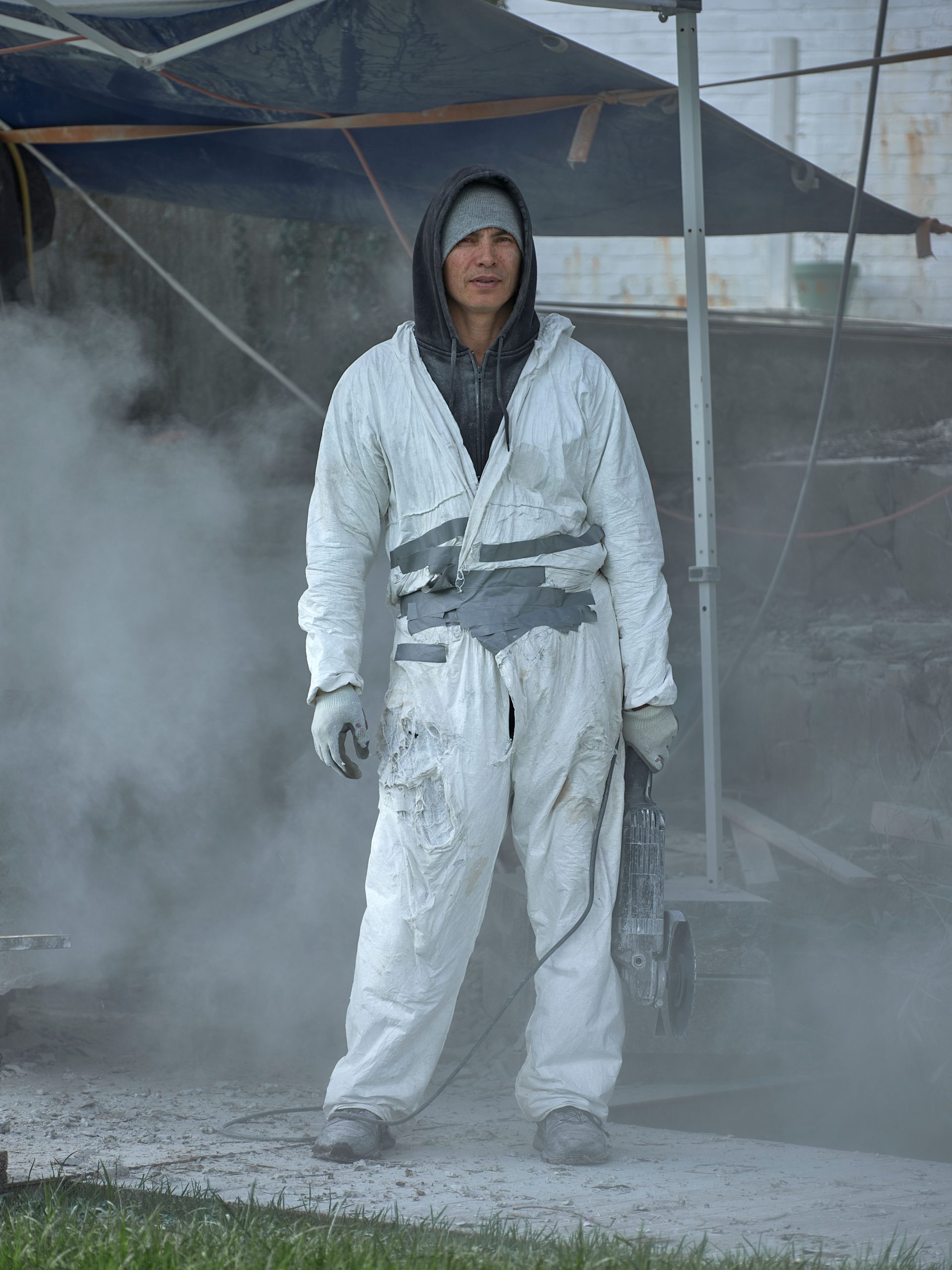Here, no. 14, 2022.
_
Brett Graham (Ngāti Koroki Kahukura, Tainui) is one of the ‘young guns’, the generation of Māori artists that emerged in the 1990s, which includes Michael Parekowhai and Lisa Reihana, Shane Cotton and Peter Robinson. Right now, Graham is the most visible of the cohort. He’s making some of his best work ever and turning heads.
The show was three years in the making. Graham says: ‘Making an exhibition is usually a headlong rush to meet the deadline. But Covid slowed down the process, so I could take my time. I did a lot of fine tuning. It was the show I wanted to make, not compromised in any way.’ Tai Moana Tai Tangata was greeted by a tsunami of engagement and acclaim, andGraham picked up an Arts Foundation laureate. A version of the show was presented at City Gallery Wellington last year (although two of the sculptures were too big for the building) and the full show travels to Christchurch Art Gallery later this year. Works will surely find their way into major New Zealand public collections.
For artists, big shows can be a mixed blessing. If you aren’t defeated by hubris, success itself can arrest you. But, in May this year, Graham fronted up with his first solo show since Tai Moana Tai Tangata—and it was bold. Ark of Forbearance at his Wellington dealer, Bartley and Company Art, made no concessions to commerce. The work was constructed in situ—a five-day build—and was demolished at the end of the show, leaving nothing to sell. ‘I’m not very good at making commercial shows’, Graham says. ‘I make things to get them out of my system. I never think about what’s going to happen to them after. It’s always been a problem.’
Graham’s minimalist boat-hull form dominated Bartley’s gallery, occupying the space like a ship in dry dock or a ship in a bottle. It loomed over visitors and impeded their passage, compelling them to circle it ritualistically, like the Kaaba, or approach it tentatively, like Kubrick’s monolith. Its imposing but sleek form was clad in cedar weatherboards, stained red, suggesting kōkōwai, the ochre traditionally used on Māori carvings—the blood spilt in the primal division of Rangi and Papa. Beingsymmetrical, you couldn’t tell which way the ship was heading. It may have been a vehicle of salvation, but there was no way to get on board. Would we be left behind?
The title was a nod to Te Whiti. When his followers at Parihaka faced invasion by the Crown, he reassured them, saying: ‘Forbearance is the sole ark of your safety. As Noah built the ark to carry his people safely through the flood, so let fortitude be the ark to save you.’ However, in November 1881, troops invaded, looting and sacking the village. Te Whiti and Tohu were arrested and jailed, most of the villagers were expelled, and those who remained were issued with government passes to control their movement. 136 years later, the Crown apologised.
While the Ark’s form was deceptively simple, the wall text prompted you to interpret it through a litany of calamity: climate change, pandemic, war, terrorism, challenges to women’s rights, and, pointedly, the recent occupation of Parliament grounds by anti-vaxxers. Citing the occupation complicated matters. Jacinda Ardern’s ‘team of five million’ had been our prevailing Covid-period ark image. But there will always be outliers, who put their faith elsewhere, and want to build their own arks.
Arks and memorials have much in common. Both are invested with faith, which can be misplaced. Graham remembers: ‘As a child, most of my early encounters with sculpture were with obelisks and cenotaphs, memorials to the New Zealand Wars and World War I. They would honour British soldiers and friendly Māori. If you belonged to one of the unfriendly tribes, you knew you were on the wrong side of history.’
Right now, Graham is turning his gaze to Christchurch. Not only is Tai Moana Tai Tangataheading there, he’s also developing a public work for the city’s public-art project Scape, to be installed in November. He and his assistant, stone sculptor Steve Woodward, are in a tent in Henderson, chipping away at a nine-ton block of Norwegian Arctic White granite. It will be a memorial to the Antarctic explorer Roald Amundsen (1872–1928)—but, really, it’s a meta-memorial, a memorial about memorials. ‘It will be called Erratic’, Graham says, ‘referring to the erratic way we chose to memorialise one person over another.’
It’ll be installed on the Avon river, opposite the old statue of another Antarctic explorer, Captain Robert Falcon Scott, disputing its pride of place. ‘We celebrate Scott, but Amundsen—who beat him to the Pole—has been forgotten, because he was Norwegian, not British’, says Graham. And he attributes Amundsen’s success to his engagement with indigenous knowledge. ‘He spent time with Inuit in the north and adapted their knowledge: their clothing, their use of huskies, their survival skills.’ Graham has little time for second-place Scott: ‘He was a bungling English aristocrat, but a master of publicity.’
So, what form will the work take? ‘It’s large, horizontal, and oval. On the surface, mounds—referring to indigenous calendars, sundials, and the rocks Inuit used to mark their pathways over the Arctic circle—will spiral out. There’s ninety-nine of them—the number of days Amundsen’s journey took.’ As I listen to Graham, I can’t help but see something of the intrepid Antarctic explorer in him too, given the scale of his own ambition and enterprise. When I ask him what’s the biggest impediment in making his art, he says, ‘The weather. I’m in a tent in Henderson. It’s pouring with rain. It’s not pretty.’
